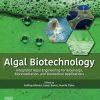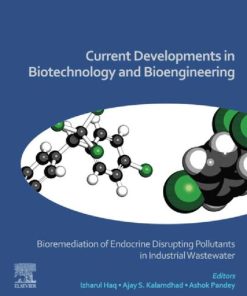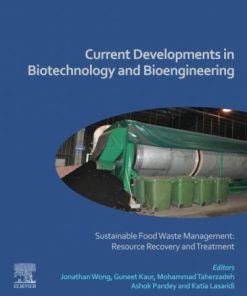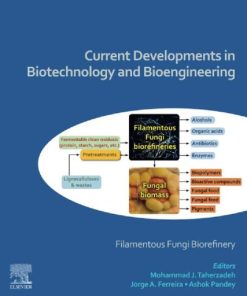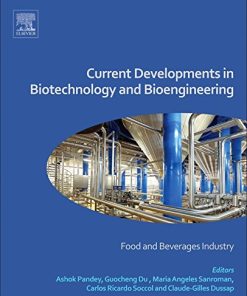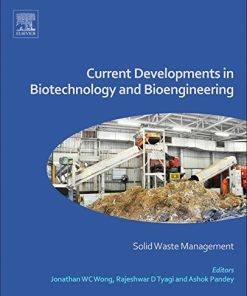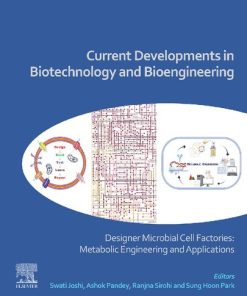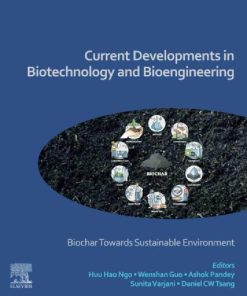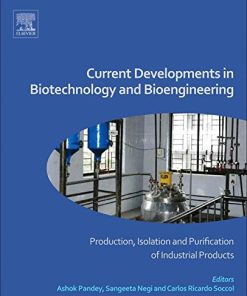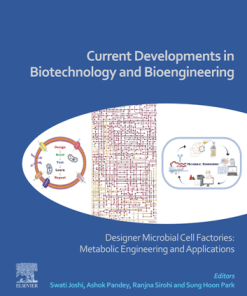Current Developments in Biotechnology and Bioengineering Advances in Composting and Vermicomposting Technology 1st edition by Ashok Pandey, Mukesh Awasthi, Zengqiang Zhang 0323985041 9780323985048
$50.00 Original price was: $50.00.$25.00Current price is: $25.00.
Current Developments in Biotechnology and Bioengineering: Advances in Composting and Vermicomposting Technology 1st edition by Ashok Pandey, Mukesh Awasthi, Zengqiang Zhang – Ebook PDF Instant Download/DeliveryISBN: 0323985041, 9780323985048
Full download Current Developments in Biotechnology and Bioengineering: Advances in Composting and Vermicomposting Technology 1st edition after payment.
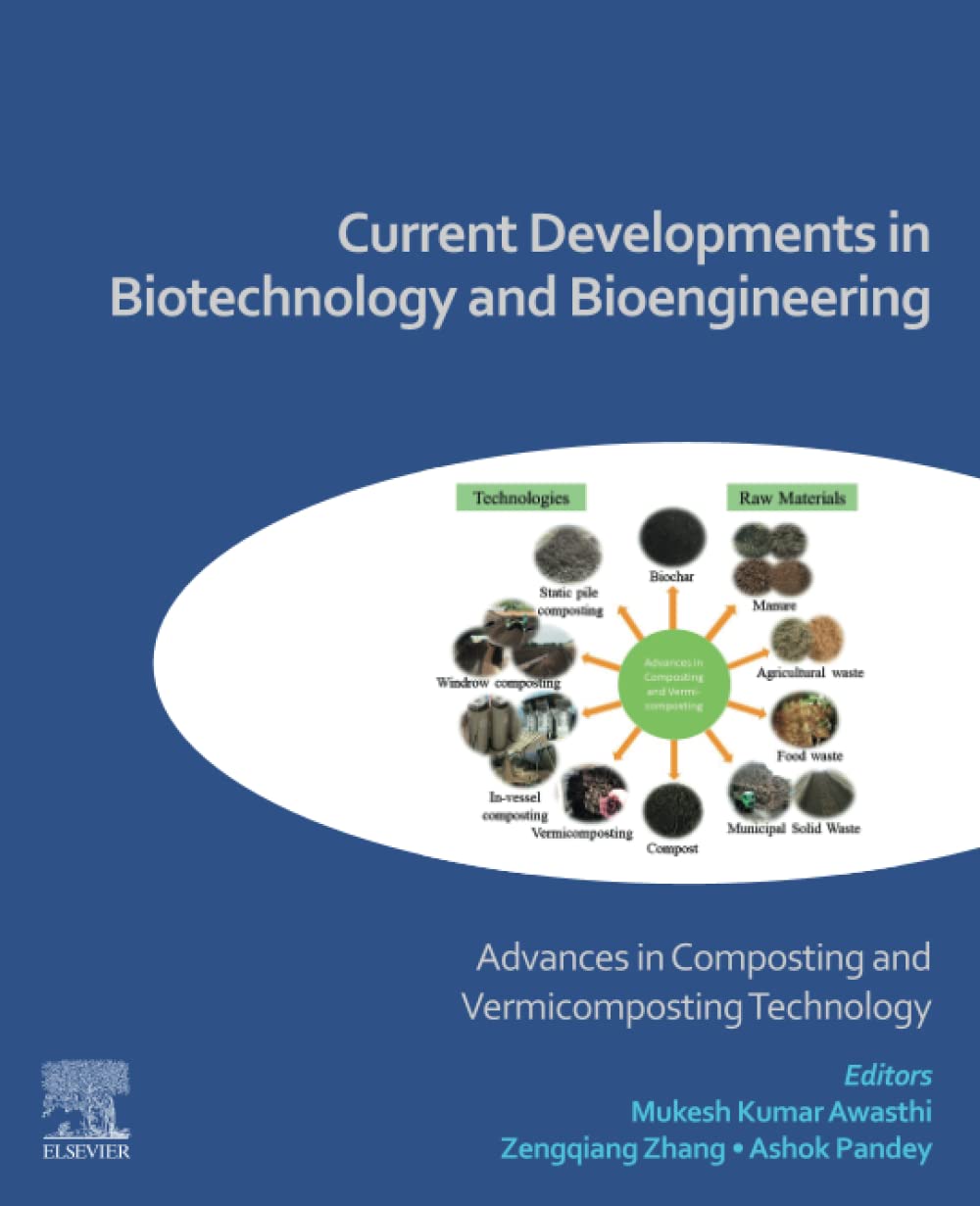
Product details:
ISBN-10 : 0323985041
ISBN-13 : 9780323985048
Author : Ashok Pandey, Mukesh Awasthi, Zengqiang Zhang
Composting and vermicomposting are widely used biological processes for the management of the wastes produced by the communities and agricultural activities, which have experienced substantial growth during the last few years. Advances in Composting and Vermicomposting Technology summarizes the most important work conducted during the last few years under one cover. The book includes conventional and recent advancements in composting and vermicompostimg technologies, information regarding mitigation of greenhouse gases emission and resistant genes, and finally recovery of “Value-Added Materials” in the composting sectors. Furthermore it includes models and available upgradation, global case studies, opportunities and challenges (technical constraints, Institutional constraints and social constraints) associated with the composting technology advancement and finally, application of LCA and considerations in economic evaluation of composting technologies and other organic waste treatment strategies.
Current Developments in Biotechnology and Bioengineering: Advances in Composting and Vermicomposting Technology 1st Table of contents:
Chapter 1 Introduction: Trends in composting and vermicomposting technologies
1.1 Introduction
1.2 Recent advancement of composting and vermicomposting technologies
1.3 Technology improvement; traditional vs modern composting
1.4 Effects of earthworms to improve rate of composting and compost quality
1.5 Dissipation pathways and mechanism of composting and vermicomposting
1.6 Global compost quality assessment in terms of composting and vermicomposting
1.7 Research limitations
1.8 Conclusions and perspectives
Acknowledgment
References
Chapter 2 Vermicomposting technology for organic waste management
2.1 Introduction
2.2 Global organic waste (OW) production
2.3 Organic waste management techniques
2.4 Vermicomposting technique
2.5 Products of vermicomposting and their uses
2.6 Vermicomposting for the management of organic waste
2.7 Recommendations and limitations of vermicomposting technology
2.8 Conclusion and prospective
References
Chapter 3 Innovations in design and operation of aeration devices for composting and vermicomposting
3.1 Introduction
3.2 Composting system regarding aeration devices
3.3 Application and limitations of composting and vermicomposting
3.4 Conclusions and prospectives
Acknowledgements
References
Chapter 4 Composting system and mature end-products production
4.1 Introduction
4.2 Composting techniques and design of composting facilities
4.3 Compost maturity
4.4 Improved composting system for mature compost production
4.4 Conclusions and perspectives
Acknowledgements
References
Chapter 5 Modeling and optimization of composting technology
5.1 Introduction
5.2 Principles of modeling of composting technology
5.3 Modelling the composting process
5.4 Requirements of composting models for prediction of environmental effects
5.5 Conclusions and perspectives
Acknowledgments
References
Chapter 6 Role of bulking agents and additive on composting
6.1 Introduction
6.2 The application of bulking agents and additive in the composting
6.1 The role of bulking agent during composting process
6.4 The role of additive on composting
6.5 Conclusions and perspectives
References
Chapter 7 Design principles of sustainable composting and recovery of value from compost
7.1 Introduction
7.2 Function of compost in soil
7.3 Factors affecting sustainable composting
7.4 Feedstock characteristics
7.5 Bulking materials
7.6 Composting facilities design
7.7 Design specifications
7.8 Conclusions and perspectives
References
Chapter 8 Role of microbes and microbial dynamics during composting
8.1 Introduction
8.2 Production and characteristics of solid waste
8.3 Characterization of solid waste
8.4 Pollution hazards, treatment, and management of solid waste
8.5 Treatment of solid waste
8.6 Utilization of solid waste
8.7 Regulatory framework for industrial compost
8.8 Microbes involved in composting
8.9 Impact of physicochemical parameters on microbial activity
8.10 Microbes discharge extracellular proteins during composting
8.11 Microbial community succession during composting
8.12 Composting accelerating microbial additives
8.13 Techniques used in profiling microbial community during composting
8.14 Conclusions and perspectives
References
Chapter 9 Antibiotic residues and the effects on composting process
9.1 Introduction
9.2 Physicochemical properties and source of antibiotics
9.3 Antibiotic residues in solid wastes
9.4 The fate of antibiotics during composting
9.5 The acute threaten of antibiotic: antibiotic resistance (AR)
9.6 Conclusions and perspectives
References
Chapter 10 Challenges and opportunities associated with composting and its end-products application
10.1 Introduction
10.2 The challenges with composting
10.3 The opportunities with composting
10.4 The critical aspects of composting process improvement towards a novel clean composting strategy
10.5 The benefits of compost land application
10.6 Economic feasibility analysis of composting
10.7 Challenges for composting vis-à-vis circular bioeconomy
10.8 Conclusions and perspectives
Acknowledgment
References
Chapter 11 Life-cycle assessment in composting technology
11.1 Introduction
11.2 Life-cycle environmental consequences
11.3 Conclusions and perspectives
References
Chapter 12 Economic and quality evaluation of composting technologies
12.1 Introduction
12.2 Composting
12.3 History of composting
12.4 Process of composting
12.5 Composting methods
12.6 Microbiology of composting
12.7 Factors affecting composting
12.8 Compost evaluation
12.9 Problems associated with commercialization
12.10 Conclusions and perspectives
References
Chapter 13 Business models of composting for a circular economy
13.1 Introduction
13.2 Composting and circular business practices in Spain
13.3 Composting and circular business practices in Romania
13.4 Conclusions and perspectives
References
Chapter 14 Enabling environment sanitation and financing by composting technologies
14.1 Introduction
14.2 Sanitary problems of conventional composting
14.3 Necessary conditions for the development of sanitary composting
14.4 Innovative approaches for promoting the environmental sanitation of composting in different countries
14.5 Outlook of the future development of environmental sanitation for composting
14.6 Conclusions and perspectives
People also search for Current Developments in Biotechnology and Bioengineering: Advances in Composting and Vermicomposting Technology 1st:
current trends in biotechnology and pharmacy
current research in biotechnology abbreviation
current trends in biotechnology and pharmacy scimago
current trends in biotechnology and microbiology
current status of biotechnology
Tags: Current Developments, Biotechnology, Bioengineering, Advances, Composting, Vermicomposting Technology, Ashok Pandey, Mukesh Awasthi, Zengqiang Zhang
You may also like…
Engineering - Bioengineering
Biology and other natural sciences - Biotechnology
Technique - Food Manufacturing
Current Developments in Biotechnology and Bioengineering: Food and Beverages Industry 1st Edition
Engineering - Bioengineering
Current Developments in Biotechnology and Bioengineering: Solid Waste Management 1st Edition
Biology and other natural sciences - Biotechnology
Biology and other natural sciences - Biotechnology
Biology and other natural sciences - Biotechnology
Biology and other natural sciences - Biotechnology


